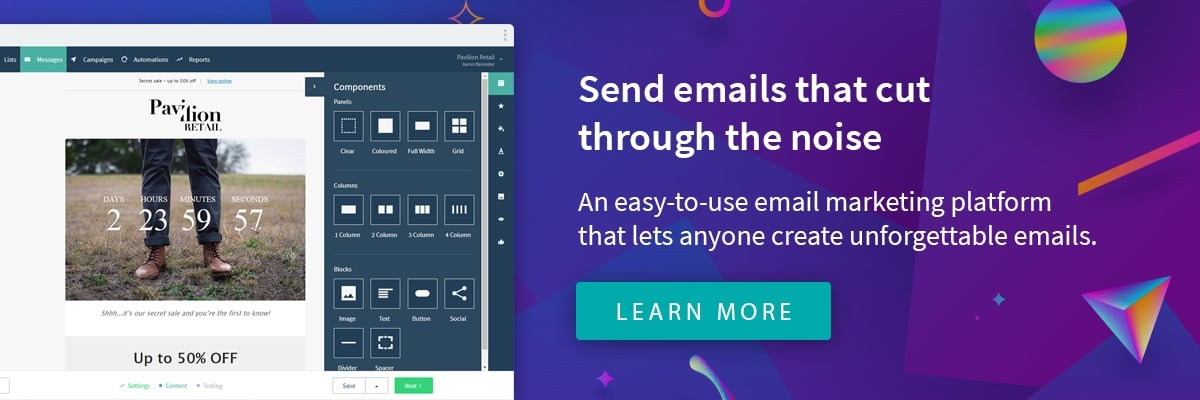Re-engagement campaigns are emails designed to recapture inactive or lapsed customers and get them engaging with your brand once again. By taking action to remove these lost subscribers from an active campaign list you will improve your opens and click statistics, reduce the percentage of bounces, unsubscribes and potential spam complaints. Also, a study by Return Path found that 45% of recipients who received win-back emails read subsequent messages. Win, win!
We’ve compiled our top ten tips to help you build and optimise your re-engagement campaigns:
Identify your inactive subscribers
We advise our clients that an inactive account is one which has not opened or clicked a campaign in the last six months. However, do some analysis of of what would work best for you – some choose to look at a 12 or 18 month timeline and might create segments based solely on opens and/or clicks or actual purchases.
Subject line is (even more) key
Subject lines are always crucial, but given that this newly created segment haven’t been bowled over by anything you’ve created recently you need to think outside the box a little. Adopt a different strategy – be punchy, emotional or to the point to ensure your email copy stands a chance of being read.
Dare to be different
This could be your last chance chance to win subscribers back so dare to be different (as long as it is still within your brand guidelines and personality of course). Experiment with bold images, call to actions (CTAs) and tone of voice. Humour often works well in these types of campaigns.
Use emotion
The psychology of email is often undervalued, but it’s key! Even in B2B you are dealing with people so use the power of emotion. For example, re-engagement campaigns often use subject lines such as “We miss you” or “Did we do something wrong?” and achieve great results.
Test, test, test
The stakes are high, so testing your campaign is really important. Also remember that testing goes beyond just the subject line – go one step further and test images, CTAs and the email copy too to see which yields better results. You could even test the tone of the email to see if evoking an emotional response is more effective than keeping the email factual and to the point.
Did you get it wrong?
Maybe you’ve fallen foul of incorrect targeting – e.g. sending your customers based in the North information about events taking place in London. They might want to engage with your brand, but your emails just haven’t been relevant. Use this re-engagement campaign as an opportunity for them to update their preferences so you can be more targeted in the future.
Multi-channel approach
Email is the linchpin of most integrated digital marketing strategies, but sometimes you have to admit defeat and accept that email is not everyone’s preferred channel. Why not ask subscribers if they’d prefer to engage with you via social media and include links to your channels instead?
Incentivise with discounts and offers
It costs more to acquire a new customer than it does to sell to an existing one, so you don’t have much to lose. Plus, who doesn’t like a discount?
Choose an alternative tool
Discounts are great for e-Commerce businesses but that isn’t the only incentive available. If you’re not in the business of selling why not try running a poll or competition to win back those lapsed subscribers? Not only is this a great way to express creativity but it also gives you the chance to collect extra data too.
Keep it concise – focus on the objective
The temptation to get carried away with the content in re-engagement emails is commonplace, but always think back to WHY you are sending the email in the first place. If the copy doesn’t serve the purpose of winning that customer back then why include it? Be concise and to the point.

